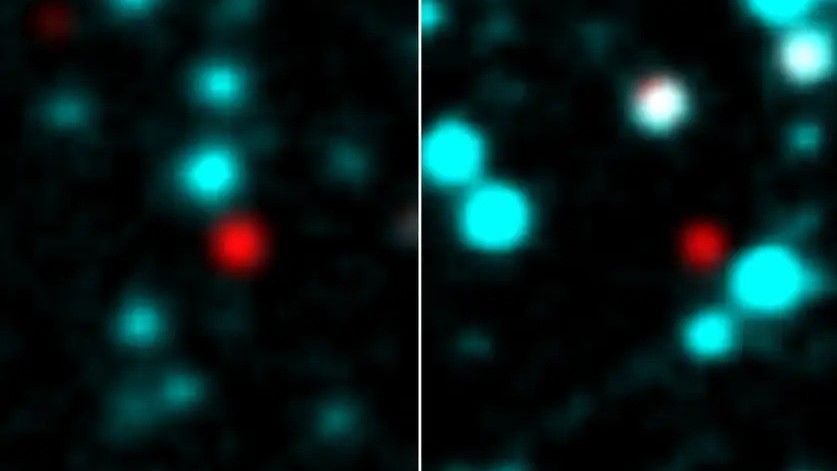Astronomers have spotted a mysterious pair of icy balls in a remote region of the Milky Way, and they’re unlike anything they’ve ever seen before.
The peculiar objects appear in the same region of the sky but are 13,000 light-years apart and unrelated to each other. They were first spotted in 2021 lurking in data taken between 2006 and 2011 by Japan’s AKARI space telescope.
Now, new observations made using the Atacama Large Millimeter/submillimeter Array (ALMA) in Chile have deepened the mystery surrounding the turquoise objects.
They could be dense gas clouds or a never-before-seen type of star, but their unusual icy appearance and distance from regions where stars usually form mean they can’t yet be explained using known physics. The researchers published their findings Jan 9. on the preprint server arXiv, so the results have not yet been peer-reviewed.
Related: Bizarre new cosmic object is the most magnetic star in the universe
“Previous infrared observations have reported that both objects show deep ice and dust absorption features that are often seen in embedded young stellar objects (YSOs) or background stars sitting behind dense clouds, however, they are located neither in known star-forming regions nor in known dense clouds,” the researchers wrote in the study. “They may represent a previously unknown type of isolated icy objects.”
Stars take tens of millions of years to form, growing from dense, billowing clouds of turbulent dust and gas to gently glowing protostars, before materializing into gigantic orbs of fusion-powered plasma like our sun.
Yet these strange blue balls are isolated from these star-forming regions. Sitting at respective distances of 30,332 light-years and 43,704 light-years from our sun, they each measure up to 10 times the size of our solar system.
This may seem large, but it’s tiny compared to the scales of other gas clouds, which can stretch up to many times the size of the entire Milky Way. Infrared readings show that the gas surrounding the objects is mainly silicon dioxide and some carbon monoxide — a ratio typically seen surrounding young stars. But given their small size and icy nature, it’s unlikely the mystery objects are stars.
To investigate the enigma further, the researchers have applied to use the James Webb Space Telescope’s sensitive infrared eye to take an even more detailed look at the orbs.
